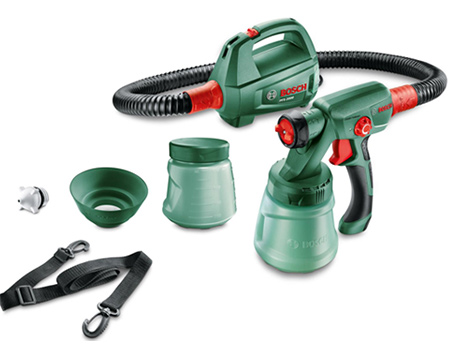Home office in an alcove
Here's a super-easy way to create an area for a home office without too much fuss.
If you need to create a small home office without taking over a whole room, and have an alcove to use, fitting an office into an alcove it a practical and efficient solution. Plus, you can have all the boards cut to size at your local Builders, making assembly easy.
YOU WILL NEED:
You can use SupaWood or MelaWood for the desk and shelves. SupaWood can be painted in your choice of colour, while MelaWood laminated boards are available in a variety of finishes.
1 of desktop (cut to fit alcove)
1 of back support (cut to same length as desktop)
2 of side supports (cut 16mm smaller than width of desktop)
2 of shelves (cut to fit alcove)
2 of shelf supports (cut to same width as shelves)
Fischer SX8 wall plugs and 5 x 60mm screws
TOOLS:
Combi Drill plus assorted bits
Bosch PMD 10 Electronic Detector
Buy all the tools and materials for this project at Builders Warehouse.
HERE'S HOW:
1. Before assembly, if you are using SupaWood for this project, you will need to paint the shelves. There are a variety of option for painting SupaWood, from using a paintbrush and foam roller, to using a Bosch PFS Spray System. You can also finish with Rust-Oleum 2X or Universal spray paint.
2. To make sure everything fits and sits perfectly straight, use the PLR 50 C to measure the size of the alcove. The PLR 50 C can also be used to ensure all pieces are absolutely level when mounting onto walls.
3. Use a pencil to mark the wall where all pieces need to be mounted.
GOOD TO KNOW: Before you drill into walls, check for electrical and plumbing pipes and conduits with an Electronic Detector. Failing to do so could result in damage and costly repairs.
4. Drill [2] holes in the side supports and [3] in the back support - approximately 50mm in from the edges. Place these on the wall where they will be mounted and push a drill bit through to mark the wall.
5. Drill 8mm holes (if using SX8 wall plugs) into the wall where marked for the back and side supports. A Combi Drill is ideal for this, as it can be used as a screwdriver, drill and has a hammer function for drilling into masonry.
6. Secure the back and side supports using wall plugs and screws and then mount the desktop and shelves on the supports.
realhomesmagazine.co.uk







